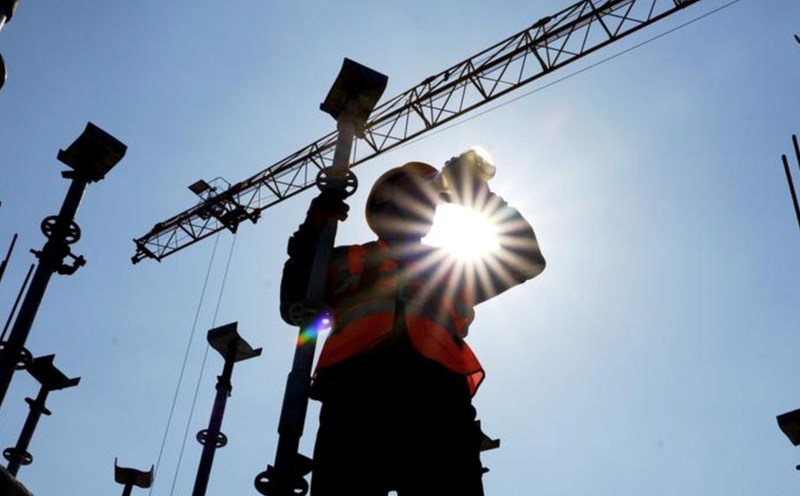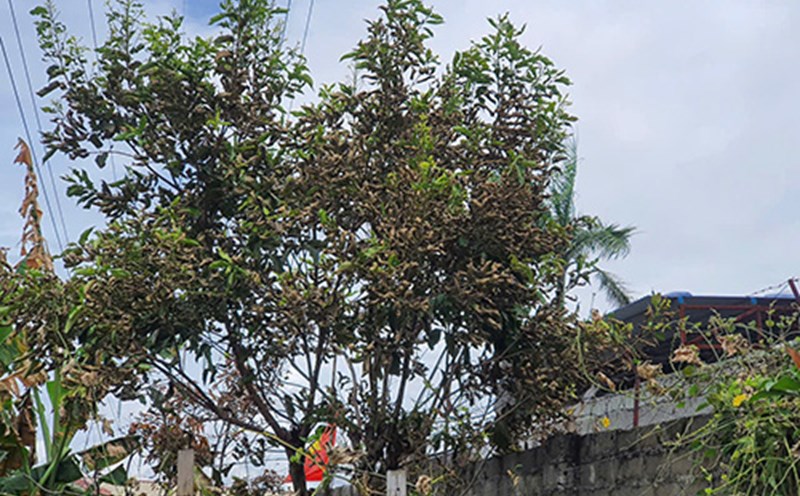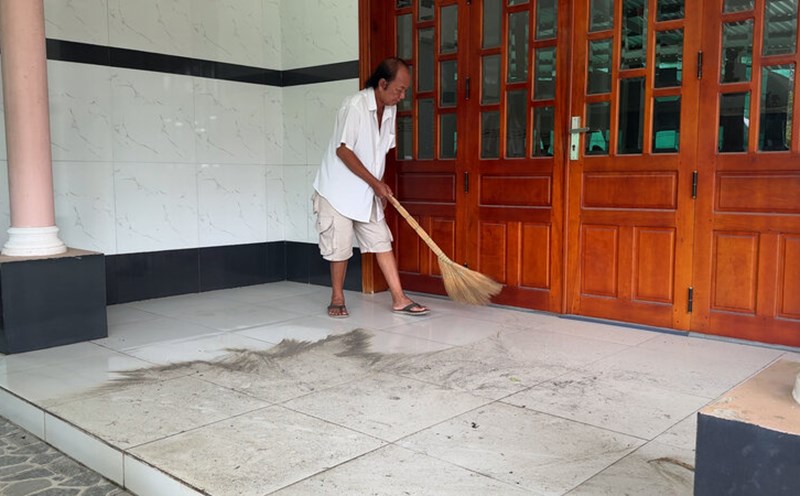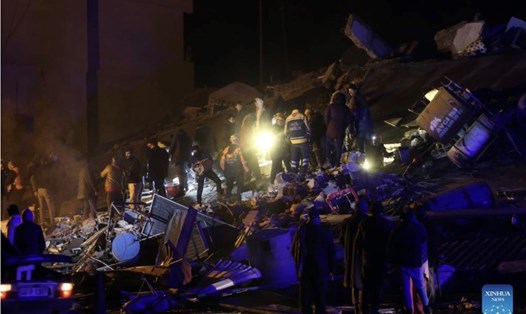In front of the Green Bay 58, there are 578 ships visiting the bay
Speaking to Lao Dong reporter, Mr. Vu Manh Long - Director of the Department of Waterways and Inland Waterway Vehicle Inspection of Quang Ninh province - said: On July 19, before the blue Bay 58 ship left port and encountered an accident, the Provincial Department of Waterways had granted licenses to 578 ships, carrying 25,458 visitors to Ha Long Bay.
According to Mr. Long, the Quang Ninh Province Hydrometeorological Station broadcasts 3 weather reports on the bay every day. Based on these bulletins, the Port Authority grants licenses to passenger ships for sightseeing. On July 19, the Green Bay 58 ship was licensed to leave the port at 12:35. At this time, there is no urgent warning bulletin from the Quang Ninh Hydrometeorological Station about thunderstorms. At 1:30 p.m., when there was a warning from the Hydrometeorological Station, the Port Authority stopped licensing ships to the bay. At this time, the Bay of Green 58 ship had departed for nearly 1 hour on its way to visit the bay. At 2:52 p.m., when the thunderstorms passed, the port continued to grant licenses to 49 ships carrying 4,145 visitors to the bay.
Informing about the ship in the Green Bay 58 sinking at 1:30 p.m. and the rescue work was not started until 3:30 p.m., Mr. Vu Manh Long explained that currently, tourist ships operating in Ha Long Bay are still managed by the Port Authority using the GPS positioning system. If there is any sudden notification, the Port Authority will notify via Zalo group for speed.
However, because the GPS positioning system still uses the phone network to operate, in low-lying areas and canyons on the bay that the telecommunications network cannot fully cover, there is still a phenomenon of GPS loss. This loss of signal usually only occurs for a few minutes and then is reconnected.
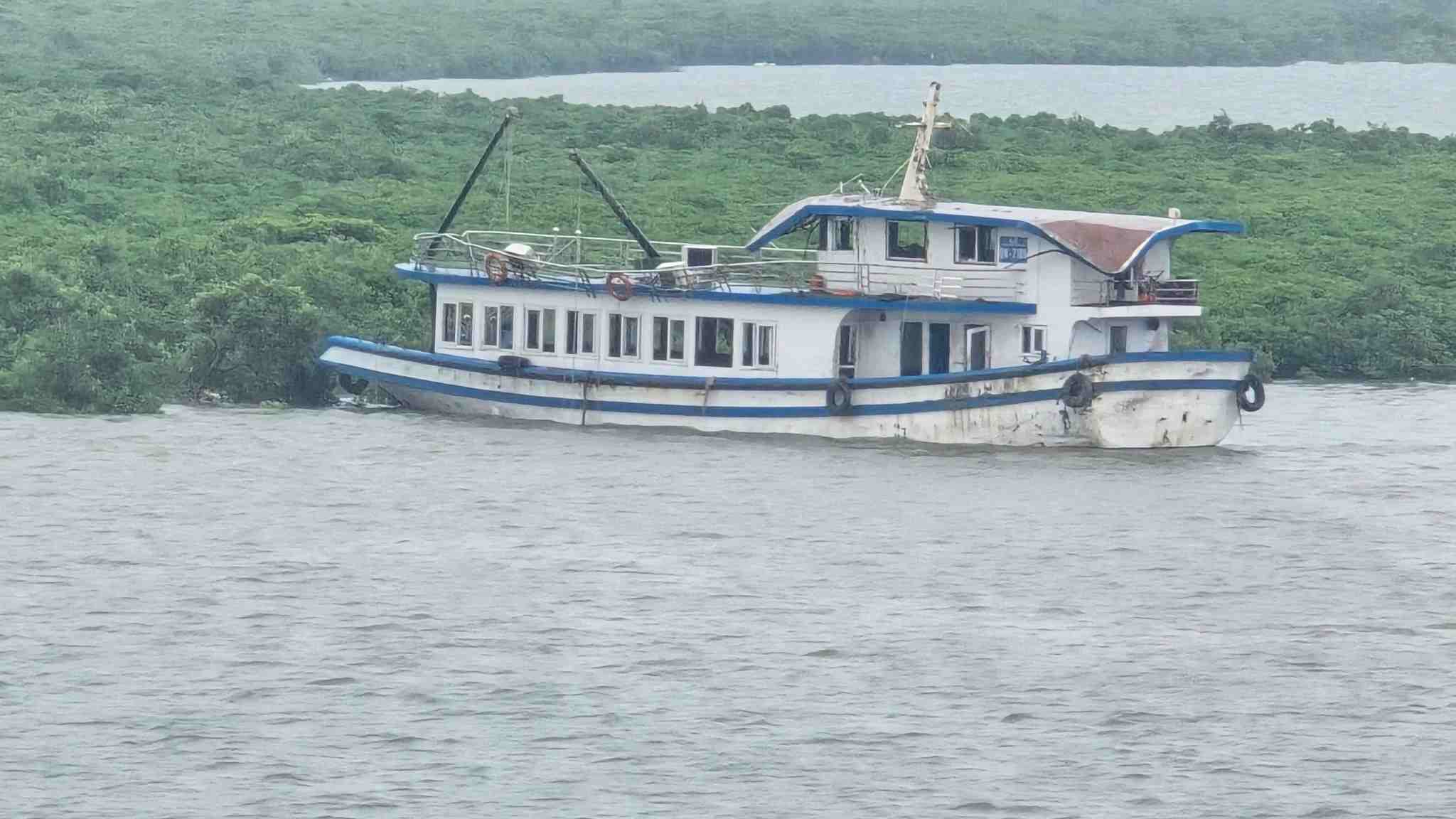
GPS positioning system has no warning function
"For the Green Bay 58 ship, at 2:05 p.m., the management system of the Waterway Port Authority and Inland Waterway Vehicle Inspection of Quang Ninh province discovered that the ship had lost its GPS signal, so we contacted the on-duty team to check again. But because it was a thunderstorm and strong winds at that time, the group had not yet discovered the sunken ship, but only thought the ship lost signal due to lost waves, the leader of the Inland Waterway Port Authority explained.
When the thunderstorms passed, after checking and verifying, at 3:30 p.m., the authorities discovered that the blue Bay 58 ship had sunk. At this time, rescue work had just been deployed, but the number of deaths was too many.
Also according to the representative of the Department of Waterways and Inland Waterway Vehicle Inspection of Quang Ninh province, the Department only manages ships through the GPS positioning system. Some ships have installed AIS systems but are still in the testing phase. The Department of Waterways and Inland Waterway Vehicle Inspection of Quang Ninh province does not manage this system.
Due to the use of a GPS positioning system via phone signal, when reaching the poor signal area, the positioning system loses signal, so when the ship sank, no distress signal is sent to the mainland. The GPS also does not have a warning function for sunken ships" - the leader of Quang Ninh Port Authority affirmed.
Informing about the incident, Mr. Bui Hong Minh - Deputy Director of the Department of Construction of Quang Ninh province - said: Currently, the province has directed units to review the entire management process, stages, to see if there are any missing stages. For regulations that have not been fully envisioned in practice, the unit will advise and supplement the province with solutions to improve the quality of the fleet, in accordance with the conditions of Ha Long Bay.
At the press conference on the afternoon of July 20, according to Lieutenant Colonel Cu Quoc Thang - Deputy Director of Quang Ninh Provincial Police, the case will be investigated to have official information and will continue to verify the responsibility of related units (if any).
Discussing this issue with Lao Dong, Master of Telecommunications Dao Trung Thanh said that the answer of the Port Authority's leaders was somewhat reasonable when explaining technically (losing GPS signal due to phone signal loss in the storm), but also somewhat did not fulfill their responsibility in management and ensuring safety.
If we only rely on GPS via mobile networks without preventive measures (such as AIS or EPIRB) when managing and monitoring ships, it is a big weakness. Along with that, the slow response to the incident shows that the monitoring and emergency response process has not been optimized... - Mr. Thanh emphasized.
Mr. Dao Trung Thanh also said that if the Green Bay 58 ship does not have emergency equipment such as EPIRB, the responsibility not only belongs to the ship owner but also involves the inspection and registration of the Port Authority. Therefore, a thorough investigation is needed to determine the exact cause of the sinking of the Green Bay 58, thereby taking measures to improve the management, monitoring and safety system for tourist boats in Ha Long Bay, to avoid repeating unfortunate incidents in the future.
The Green Bay 58 ship still has a waiting period for inspection until February 2026
Mr. Nguyen Van Thong - Deputy Director of the Department of Waterways and Inland Waterway Vehicle Inspection of Quang Ninh province - said: The Green Bay 58 ship was built in 2014, designed by the Vietnam Inspectorate, is a steel-shell ship, 20 meters long, 6 meters wide, 150CV main engine capacity, allowed to carry up to 48 people. The ship has been licensed to operate since 2015, the most recent of which was in January 2025, effective until February 4, 2026.
Some serious shipwrecks in Ha Long Bay
The sinking of the Truong Hai 06 ship with license plate QN-5198 at 5:00 a.m. on February 17, 2011 at an overnight anchorage area in Ha Long Bay killed 12 people, including 10 foreign guests, 1 Vietnamese tourist and a tour guide. The ship's staff and 9 other international tourists were lucky to escape.
The reason was that the staff turned off the ship's engine, but did not turn on the riverine valves (when the ship was in operation, this tube was opened to cool the engine), so the seawater entered through the riverine pipeline, flooding the entire engine compartment, causing the ship to sink on the spot.
The second incident was on the afternoon of October 3, 2012, while taking 17 Taiwanese (Chinese) tourists from Sung So cave to a boat parked in Ha Long Bay, a small transport ship collided with a Dong Phong tourist ship, killing 5 people (3 women and a 9-year-old girl drowning on the spot, a male Taiwanese tourist died at the hospital).
Many safety vulnerabilities and lack of real-time warnings
Discussing the capsize of the Green Bay 58 tourist ship (QN-7109), Mr. Pham Ha, Chairman of LuxGroup - the owner of many cruise ships in Quang Ninh and Nha Trang, pointed out a worrying problem: the ship in distress had a very low water bulge - that is, the body was submerged in water very shallow - while the upper flood was high, causing the ship to seriously lose balance when encountering strong winds. Such a design can easily lead to sudden overturns, without time to escape, especially when water flows in quickly from one side and the boat sinks down very quickly. Although tourist boat models operating in the bay must pass inspection and be assessed for stability, according to Mr. Ha, there are still some old boat models with outdated designs that do not meet modern safety requirements still in circulation. "We need to review the entire design system, especially for two-story wooden ships, ships with low waterlogging and high centerline" - he proposed. In addition, Dr. Pham Ha also noted the gap in weather warnings when the weather notification system for ships is mainly manual, through Zalo groups or communication by phone. Meanwhile, meteorological forecasts are broadcast every 6 hours - long enough for a strong thunderstorm to suddenly hit and cause an accident.
Mr. Ha suggested that it is necessary to soon cover the entire area, GPS and Internet, integrate an alarm system, positioning and emergency rescue signal, to help ships easily receive warnings and support each other when an incident occurs. Specifically, there needs to be a system to promptly receive weather warnings and send emergency signals via images, light or LED lights. This helps other ships to be able to provide assistance immediately upon the incident. At the same time, good connecting infrastructure also enhances the experience of tourists, especially in long-term tours on the bay.
Agreeing with this view, Mr. Nguyen Tien Dat, Vice President of Hanoi Tourism Association, assessed that many decisions for ships to depart from port still rely on the personal feelings of the ship owner or tour guide, while there should be clear regulations, bound by specific legal responsibilities. In particular, when weather forecasts are not directly integrated into the process of granting licenses to depart ports or canceling trips, the risk of ships facing risks due to bad weather is still very high.
Another noteworthy point is updating weather information to crew members when the boat is moving in the bay. There is currently no integrated headline or emergency message system for live weather warnings to operating vessels, leading to delays in responding to unusual incidents. Pham Huyen

